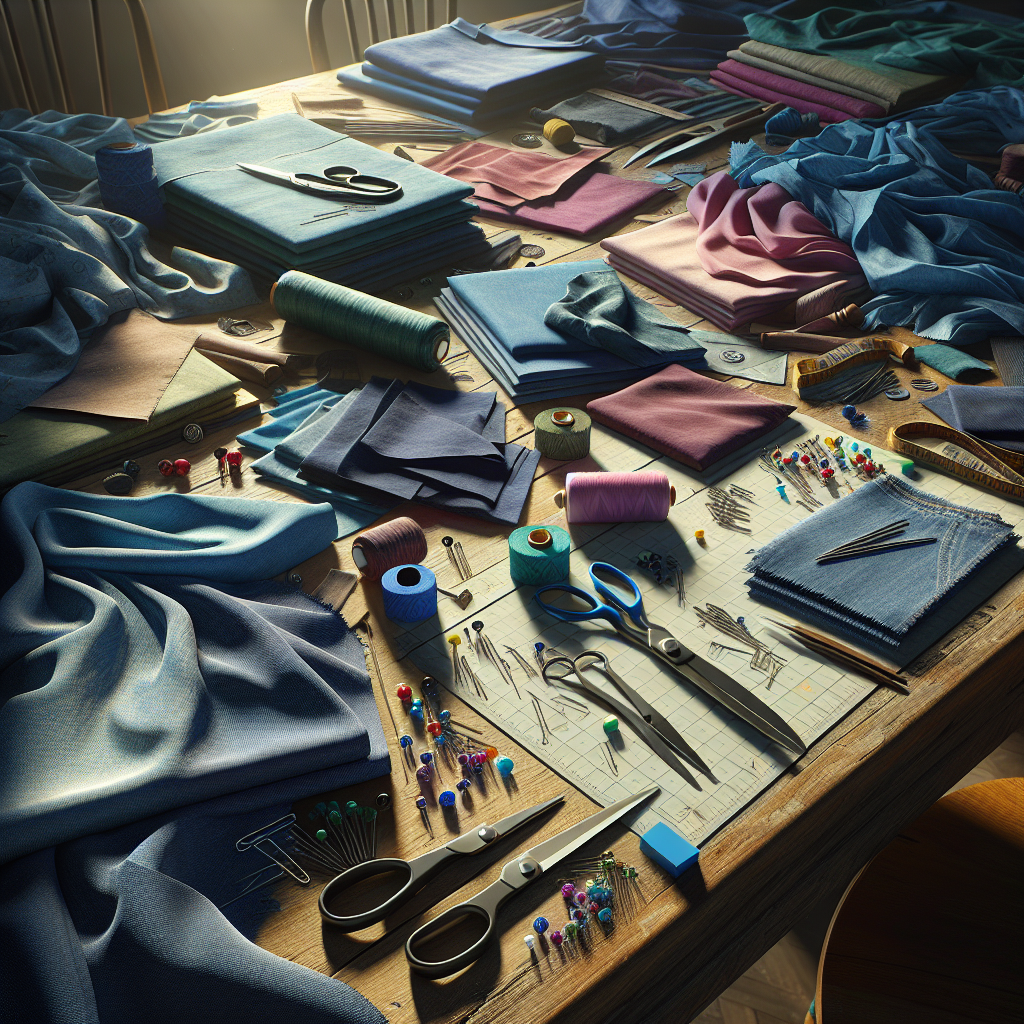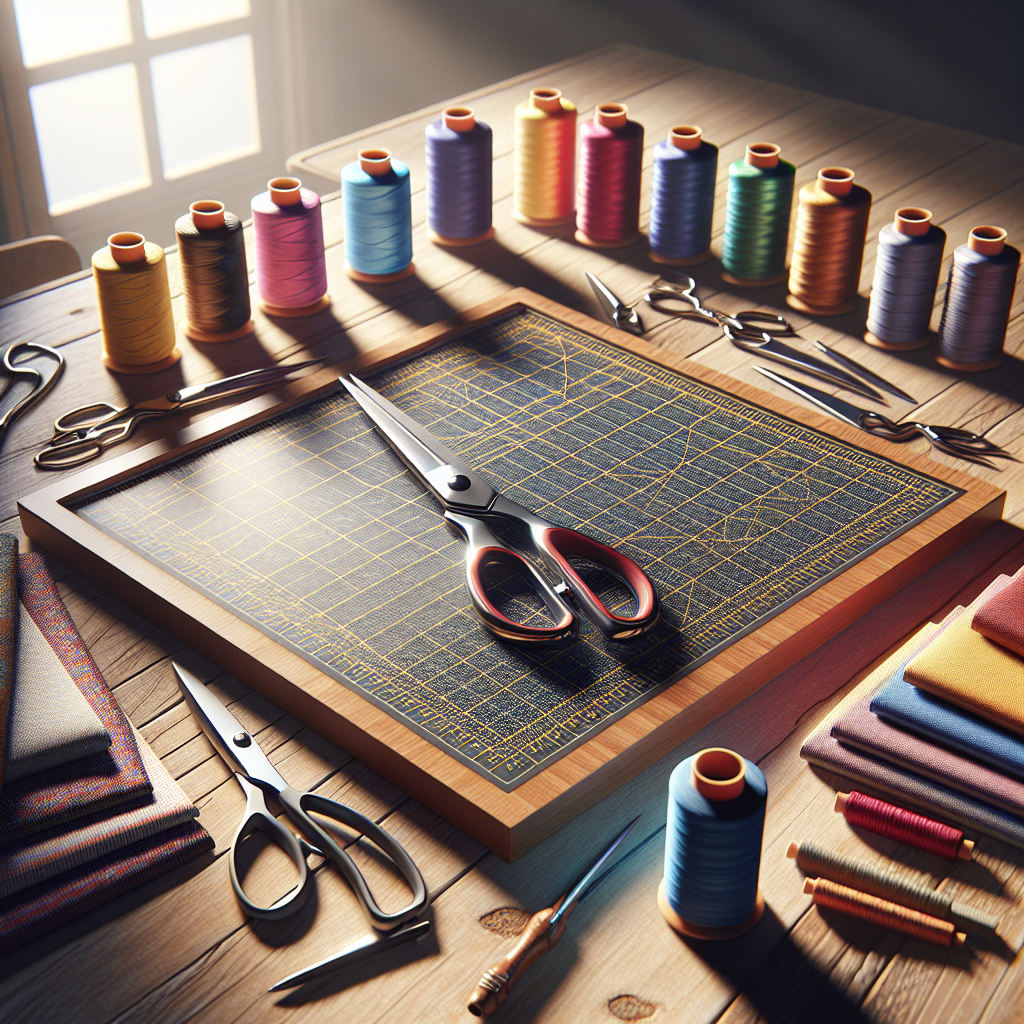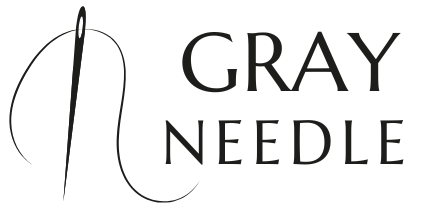Accurate fabric cutting is a fundamental skill in the world of sewing that can significantly influence the outcome of your projects. When you cut your fabric precisely, you set a solid foundation for your sewing endeavors, ensuring that your garments or crafts fit well and look polished.
One of the primary reasons accurate cutting is essential is that it reduces waste. When fabric is cut incorrectly or unevenly, it often leads to unusable scraps that are frustrating and costly. By following sewing tips for fabric cutting accuracy, you can maximize your material usage and keep your projects budget-friendly.
Moreover, precise cuts are crucial for achieving consistent seams. When pieces are cut irregularly, it can lead to mismatched seams, puckering, and an overall amateur appearance. Consistency in cutting promotes ease during the sewing process, allowing you to achieve that professional finish you desire.
Additionally, understanding the grainline of your fabric and how it affects the drape and structure of your finished piece is vital. Cutting along the grain ensures that your fabric behaves as intended, providing stability and preventing distortion.
For those eager to enhance their sewing skills, visit our website to learn more and get started today! Click here.
Essential Tools for Precision Fabric Cutting

To achieve sewing tips for fabric cutting accuracy, having the right tools at your disposal is crucial. The following is a list of essential tools that every sewing enthusiast should consider for precision fabric cutting:
- Rotary Cutter: This tool is perfect for making straight, clean cuts through multiple layers of fabric. It provides a much smoother cut compared to traditional scissors.
- Self-Healing Cutting Mat: Pairing a rotary cutter with a self-healing cutting mat protects your work surface and extends the life of your blades. The mat also has grid lines that help with accurate measurements.
- Fabric Scissors: A good pair of fabric scissors is a must for cutting delicate fabrics or detailed shapes. Ensure that these scissors are used exclusively for fabric to keep them sharp.
- Measuring Tools: Tools such as rulers, measuring tapes, and quilting squares are essential for taking accurate measurements and ensuring your fabric pieces are cut to the right size.
- Chalk or Fabric Markers: Marking the fabric before cutting can help guide your cuts and ensure accuracy. Use chalk or fabric markers that can easily wash out or fade away.
- Weights: Fabric weights can hold down patterns and fabric layers in place, preventing shifting and misalignment during cutting.
Investing in these tools will significantly enhance your cutting accuracy and improve the overall quality of your sewing projects.
Techniques to Improve Fabric Cutting Accuracy

Improving fabric cutting accuracy is essential for achieving professional-looking sewing projects. Here are some effective techniques to enhance your precision:
- Prepare Your Fabric: Always wash and iron your fabric before cutting. This helps to eliminate any shrinkage and ensures the fabric lays flat, which is crucial for accurate cuts.
- Use a Sharp Blade: Whether you’re using scissors or a rotary cutter, make sure the blade is sharp. Dull blades can cause jagged edges and uneven cuts, compromising your project’s quality.
- Measure Twice, Cut Once: Taking the time to double-check your measurements can save you from costly mistakes. Use measuring tools to mark your fabric accurately before making any cuts.
- Stabilize Your Fabric: For slippery or stretchy fabrics, consider using a lightweight stabilizer. This helps to maintain the fabric’s shape and prevents it from shifting while you cut.
- Cut in One Direction: To maintain the integrity of the fabric grains, always cut in one direction. This reduces the risk of fraying and helps achieve cleaner edges.
- Practice Steady Hands: Keep your cutting hand steady and apply even pressure to your cutting tool. If you find it difficult to maintain a straight line, take your time and don’t rush the process.
By incorporating these techniques into your sewing routine, you’ll notice a significant improvement in your fabric cutting accuracy, leading to better results in your projects.
Preparing Fabric for Accurate Cuts

Proper preparation of fabric is a crucial step toward achieving accurate cuts. Here are some essential steps to ensure your fabric is ready for precise cutting:
- Wash and Dry: Always wash and dry your fabric according to its care instructions before cutting. This pre-shrinking process helps prevent any changes in dimensions after your project is complete.
- Iron Your Fabric: After washing, take the time to iron your fabric. Removing all wrinkles is vital, as even small creases can lead to inaccurate measurements and cuts.
- Lay Flat: When setting up your fabric for cutting, make sure it lays flat on a clean, smooth surface. Avoid using surfaces that are uneven, as this can cause distortion in your fabric.
- Align the Grain: Pay special attention to the fabric’s grainlines. Aligning patterns with the grain ensures your pieces maintain their shape and drape correctly when sewn together.
- Cutting Layout: Before cutting, create a layout of your pattern pieces on the fabric. This helps maximize fabric use and ensures all pieces are cut accurately. Consider using weights instead of pins to minimize distortion.
- Make Use of a Cutting Mat: If using a rotary cutter, always cut on a self-healing cutting mat. This protects your blade and provides a smooth cutting surface.
By taking the time to prepare your fabric properly, you set the foundation for achieving the best possible results in your sewing projects.
Common Fabric Cutting Mistakes to Avoid
Even experienced sewists can fall prey to common fabric cutting mistakes that can compromise the accuracy of their projects. Here are some pitfalls to watch out for:
- Ignoring the Fabric Grain: Cutting against the grain can lead to distortion, resulting in garments that twist or hang incorrectly. Always ensure your pieces align with the fabric’s grainline.
- Using Dull Tools: A dull rotary cutter or pair of scissors can create jagged edges and uneven cuts. Regularly sharpen or replace your cutting tools to maintain precision.
- Failing to Measure Twice: The age-old adage of “measure twice, cut once” holds true. Always double-check your measurements to avoid cutting fabric too small or inaccurately.
- Cutting Without a Cutting Mat: Cutting directly on a hard surface can dull your blades and damage your furniture. Always utilize a cutting mat to protect both your tools and your workspace.
- Overlooking Pattern Placement: Not paying attention to pattern placement can lead to mismatched designs or wasted fabric. Ensure you strategically place your pattern pieces to maintain a cohesive look.
- Not Accounting for Seam Allowances: Forgetting to add seam allowances can result in pieces that are too small to sew together. Always refer to your pattern instructions for the correct measurements.
Avoiding these common mistakes can significantly enhance your cutting accuracy, ultimately leading to more successful sewing projects.
Tips for Maintaining Cutting Accuracy Over Time

Maintaining cutting accuracy is essential for achieving professional-looking results in your sewing projects. Here are some valuable tips to ensure your fabric cutting remains precise over time:
- Regularly Maintain Your Tools: Keep your rotary cutters and scissors sharp. Dull tools can lead to ragged edges and inaccurate cuts. Invest in a good sharpener or replace blades as needed to ensure they perform optimally.
- Store Fabrics Properly: Store your fabrics in a dry, cool place to prevent them from warping or losing their shape. Use clear bins or shelves that keep them visible and easy to access, ensuring you don’t have to wrestle with wrinkled or crumpled fabric.
- Practice Consistency: Develop a consistent cutting technique. Whether you’re using a rotary cutter or scissors, the more you practice, the more accurate your cuts will become. Consistency in pressure and speed can significantly impact your results.
- Keep Your Workspace Organized: A clutter-free workspace allows for better focus and reduces the chances of accidents. Organize your cutting area, keeping tools and fabrics within reach to maintain efficiency.
- Use Quality Rulers and Mats: Invest in high-quality cutting mats and rulers. A clear, durable ruler allows for better visibility and accuracy when measuring, while a self-healing cutting mat will protect your blades and your work surface.
By implementing these strategies, you can enhance your cutting accuracy and enjoy more successful sewing experiences. Visit our website to learn more and get started today! Click here.

